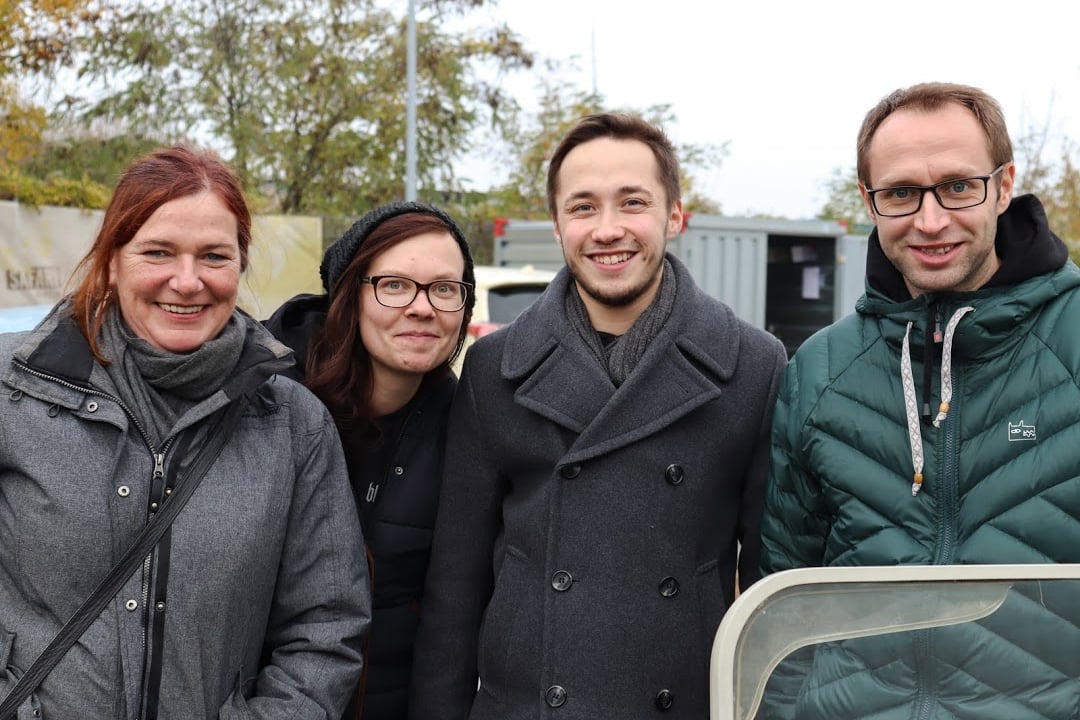- How can we as a company adapt flexibly to changing requirements and order volumes?
- How do we as a growing company ensure efficient work, good communication and knowledge exchange in a rapidly changing business?
- How do we promote team spirit and employee motivation while ensuring happy customers?
These and similar questions probably occupy many companies. We have found answers in the Spotify agile model.
How does the agile organization work according to the Spotify model?
The streaming service provider Spotify has developed a model that enables even larger and fast-growing companies to work in an agile manner. The organizational model is based on so-called tribes , which are subdivided into squads. A tribe functions similar to a business incubator, in which the appropriate "mini startups" are formed in the form of squads depending on the current order situation. As autonomous teams, the squads work independently on a topic/project.
Other components of the agile organization according to Spotify are chapters and guilds - structures that facilitate the exchange of knowledge between employees. But before we get lost in terminology, let's just show how we've applied the Spotify model to our everyday agency life.

Agility at Blackbit: The Tribes model in action
To best serve our clients, we have formed three Tribes, each serving specific technologies (stacks): Tribe Digital Commerce, Tribe E-Commerce, and Tribe Digital Marketing. Similar customers with similar technical and content requirements are assigned to a tribe. Within a tribe, all the skills needed to meet the respective customer requirements should be present (e.g. web developers, graphic designers, SEO/SEA experts, copywriters). The size of the subordinate squads is based on the efficiency of the collaboration. The squad itself estimates the size at which cooperation becomes difficult and a new squad is formed. In a tribe, there are three additional collaborators besides squad members:
- TribeMaster: acts as the managing director, CEO of his tribe and is a mentor to his squads; gives the tribe a development path and defines priorities; represents his tribe to the outside world and at meetings with customers
- Tribe leader: is the "right hand" of the tribe master and specialist of the technology stack of his tribe; as application development leader, he sets the development direction, determines the way of implementation of the most important projects and drives the further development of the developers
- Sales representative: is an expert in the services and products offered by his tribe and is involved in conceptualization, effort estimation and retrospectives of the squads
Autonomy and self-organization of the project teams
The agile tribes model creates the organizational framework for self-responsible teamwork in flat hierarchies. A squad has the task of implementing project requirements in a customer-oriented, effective and efficient manner. How a squad achieves the best result is left to the squad. Since projects are always handled by the same squad, the members of a squad know each other's working style, know who can do what, and can tackle tasks together. This is the only way that employees and squads can make projects their own and take joint responsibility for the success of the project, instead of only looking at the fulfillment of their partial task.
The project manager (in the original Spotify model: the product owner) manages the squad's projects, leads the team and coordinates all tasks that arise. He is responsible for project costing and budget monitoring as well as coordination with the customer.

Knowledge transfer as part of the corporate culture
To ensure that the subdivision into squads does not slow down the exchange of knowledge and experience as well as the communication between colleagues with a similar focus of tasks, the agile methods according to Spotify provide for so-called chapters and guilds:
- Chapters are specialist departments within a tribe (around one hundred people strong).
- Guilds are cross-tribe interest groups.
Since the tribes at Blackbit are comparatively small and tribe masters and tribe leaders take care of the personnel and technical development of the tribe, we use a mixed form of chapters and guilds: Cross-tribe technical departments that can be shared later if needed. Cross-tribe and cross-site knowledge exchange takes place in our company, for example, via group chats and regularly scheduled discussion rounds/video conferences - on topics such as leadership, management, web development or online marketing. For example, our developers regularly invite us to TechTalks, where they present new application developments. The video recordings of the sessions are then available to all interested colleagues.

Agile working: The advantages at a glance
Organizing according to agile methods brings all kinds of positive effects and is an essential cornerstone of a successful digital transformation. According to our experience, agile companies benefit in particular from the following advantages:
- Scalability: new tribes or squads can be established flexibly at any time to meet new project requirements/volumes.
- Speed/efficiency: Agile projects can be implemented quickly thanks to flat hierarchies, short decision-making paths and well-coordinated teams.
- High quality of results: Structures for knowledge transfer and communication, experienced teamwork and high customer orientation as well as a sense of responsibility among team members ensure the best results.
- Motivated employees: Participation and co-determination rights as well as working in familiar groups with flat hierarchical structures motivate team members to work independently.
- Satisfied customers: Agile projects that are characterized by efficiency, customer orientation and high quality results naturally also inspire clients - a good basis for long-term collaboration.
Blackbit talks about agility and the Spotify model in the podcast.
Our CEO Stefano Viani reveals more about how we have evolved as an agency over the past years and how we have reorganized our organizational structure according to the Spotify model in an interview with SAR Business Solutions. Click here to listen to the podcast
Do you have any questions or would you like a personal consultation?
Why Server-Side Tracking Is Becoming Indispensable for Pimcore Projects
When a Delicatessen Refines Its Marketing - And We Supply the Right Ingredients
Blackbit at Web Summit 2025: Experience E-Commerce Trends Live
Webinar: From Google to ChatGPT - How to Stay Visible in AI Search

Leave us feedback